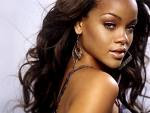
The Simple Present tense
Negative form
The structure of the negative structure is formed by adding the auxiliaries do or does plus the negation not
Do + not —> don’t
Does + not —> doesn’t
These auxiliaries are used TO HELP you. When you use the auxiliary the verb is always in its simple.
Remember:
In positive we had 2 conjugations for every verb (not to be)
- play/plays , work/works, study/studies, watch/watches, etc…
The conjugation is simple: HE / SHE / IT —- with the “s” form and I / WE / YOU / THEY —- simple form
Examples:
My brother works for IBM.
My parents live in Paris.
IN THE NEGATIVE FORM THE AUXILIARY CHANGES FORM AND NOT THE VERB.
He / she / it + doesn’t + verb (simple form)
I / We / You / They + don’t + verb (simple form)
Figura #1:
Let’s Practice
Nota del profesor:Como vemos, lo que se conjuga en la forma negativa es el auxiliar y no el verbo. Es decir, uno va elejir entre don’t y el doesn’t pero el verbo SIEMPRE estara en su forma simple (sin la terminación “s”)
Question form
The question structure is formed by following the following structure
Question word + [do / does + SUBJECT + Verb (simple form)] + Complement
We use the auxiliaries do and does in the question form and they have to agree with the subject
The conjugation is the following:
Does —–> he/she/it
Do ———-> I/we/you/they
The verb ALWAYS stays in the simple form (not with the “s” form)
Short Answers
Las respuestas cortas son con los auxiliares do y does con la forma positiva y don´t y doesn’t con la forma negativa. La respuesta corta se refiere a cuando responde solo si o no.
Do you study English for free in InglesTotal? ———-> Yes, I do
Yes, (I, you, we, you, they) do. ———— No, ( (I, you, we, you, they) don’t.
Yes, (he,she,it does)————————- No, (he,she,it )doesn’t
Figura #2
Figura #3
Let’s Practice
Conclusion:
The auxiliaries appear in the negative and question form with the verbs that are not to be.
Example:
(+) Juan plays soccer.
(-) He doesn’t play soccer.
(?) Does he play soccer?
*VERB TO BE (NO AUXILIARIES!!!)
(+) She is a teacher
(-) She isn’t a teacher.
(?) Is she a teacher?
Nota: Recuerden que cuando usen el verbo to be (es decir cualquier conjugacion de ser o estar en el presente) no se usan los auxiliares puesto que estos se usan solo con los demas verbos y en negativo y en pregunta)
Tarea / Homework
I) Cambie las oraciones de formpositiva a forma negativa
II) Escriba la forma de pregintas de las siguientes oraciones
III) Llene los vacios con la forma correcta de los auxiliares.
Negative form
The structure of the negative structure is formed by adding the auxiliaries do or does plus the negation not
Do + not —> don’t
Does + not —> doesn’t
These auxiliaries are used TO HELP you. When you use the auxiliary the verb is always in its simple.
Remember:
In positive we had 2 conjugations for every verb (not to be)
- play/plays , work/works, study/studies, watch/watches, etc…
The conjugation is simple: HE / SHE / IT —- with the “s” form and I / WE / YOU / THEY —- simple form
Examples:
My brother works for IBM.
My parents live in Paris.
IN THE NEGATIVE FORM THE AUXILIARY CHANGES FORM AND NOT THE VERB.
He / she / it + doesn’t + verb (simple form)
I / We / You / They + don’t + verb (simple form)
Figura #1:
Let’s Practice
Nota del profesor:Como vemos, lo que se conjuga en la forma negativa es el auxiliar y no el verbo. Es decir, uno va elejir entre don’t y el doesn’t pero el verbo SIEMPRE estara en su forma simple (sin la terminación “s”)
Question form
The question structure is formed by following the following structure
Question word + [do / does + SUBJECT + Verb (simple form)] + Complement
We use the auxiliaries do and does in the question form and they have to agree with the subject
The conjugation is the following:
Does —–> he/she/it
Do ———-> I/we/you/they
The verb ALWAYS stays in the simple form (not with the “s” form)
Short Answers
Las respuestas cortas son con los auxiliares do y does con la forma positiva y don´t y doesn’t con la forma negativa. La respuesta corta se refiere a cuando responde solo si o no.
Do you study English for free in InglesTotal? ———-> Yes, I do
Yes, (I, you, we, you, they) do. ———— No, ( (I, you, we, you, they) don’t.
Yes, (he,she,it does)————————- No, (he,she,it )doesn’t
Figura #2
Figura #3
Let’s Practice
Conclusion:
The auxiliaries appear in the negative and question form with the verbs that are not to be.
Example:
(+) Juan plays soccer.
(-) He doesn’t play soccer.
(?) Does he play soccer?
*VERB TO BE (NO AUXILIARIES!!!)
(+) She is a teacher
(-) She isn’t a teacher.
(?) Is she a teacher?
Nota: Recuerden que cuando usen el verbo to be (es decir cualquier conjugacion de ser o estar en el presente) no se usan los auxiliares puesto que estos se usan solo con los demas verbos y en negativo y en pregunta)
Tarea / Homework
I) Cambie las oraciones de formpositiva a forma negativa
II) Escriba la forma de pregintas de las siguientes oraciones
III) Llene los vacios con la forma correcta de los auxiliares.

No hay comentarios:
Publicar un comentario